Wenchao Zhang
Align Beyond Prompts: Evaluating World Knowledge Alignment in Text-to-Image Generation
May 24, 2025Abstract:Recent text-to-image (T2I) generation models have advanced significantly, enabling the creation of high-fidelity images from textual prompts. However, existing evaluation benchmarks primarily focus on the explicit alignment between generated images and prompts, neglecting the alignment with real-world knowledge beyond prompts. To address this gap, we introduce Align Beyond Prompts (ABP), a comprehensive benchmark designed to measure the alignment of generated images with real-world knowledge that extends beyond the explicit user prompts. ABP comprises over 2,000 meticulously crafted prompts, covering real-world knowledge across six distinct scenarios. We further introduce ABPScore, a metric that utilizes existing Multimodal Large Language Models (MLLMs) to assess the alignment between generated images and world knowledge beyond prompts, which demonstrates strong correlations with human judgments. Through a comprehensive evaluation of 8 popular T2I models using ABP, we find that even state-of-the-art models, such as GPT-4o, face limitations in integrating simple real-world knowledge into generated images. To mitigate this issue, we introduce a training-free strategy within ABP, named Inference-Time Knowledge Injection (ITKI). By applying this strategy to optimize 200 challenging samples, we achieved an improvement of approximately 43% in ABPScore. The dataset and code are available in https://github.com/smile365317/ABP.
A More Compact Object Detector Head Network with Feature Enhancement and Relational Reasoning
Jul 03, 2021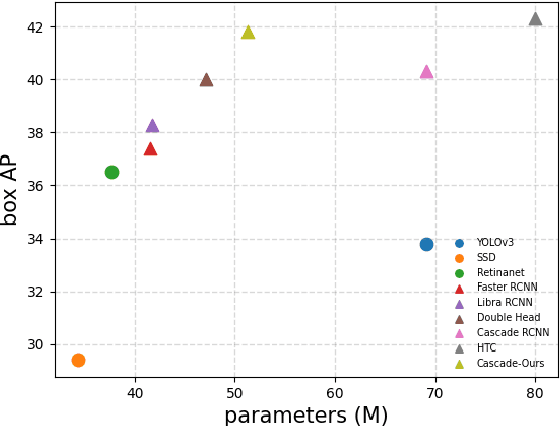

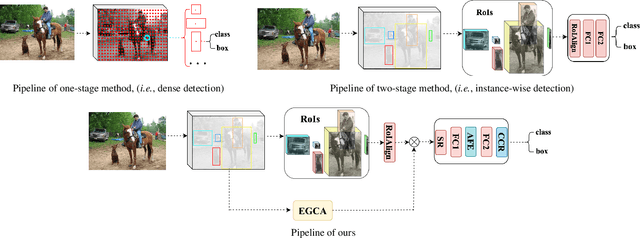
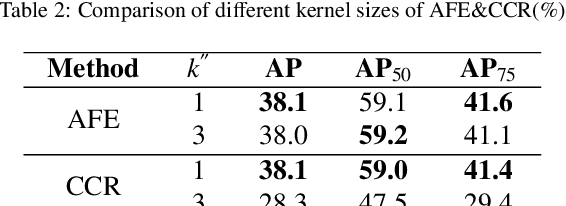
Abstract:Modeling implicit feature interaction patterns is of significant importance to object detection tasks. However, in the two-stage detectors, due to the excessive use of hand-crafted components, it is very difficult to reason about the implicit relationship of the instance features. To tackle this problem, we analyze three different levels of feature interaction relationships, namely, the dependency relationship between the cropped local features and global features, the feature autocorrelation within the instance, and the cross-correlation relationship between the instances. To this end, we propose a more compact object detector head network (CODH), which can not only preserve global context information and condense the information density, but also allows instance-wise feature enhancement and relational reasoning in a larger matrix space. Without bells and whistles, our method can effectively improve the detection performance while significantly reducing the parameters of the model, e.g., with our method, the parameters of the head network is 0.6 times smaller than the state-of-the-art Cascade R-CNN, yet the performance boost is 1.3% on COCO test-dev. Without losing generality, we can also build a more lighter head network for other multi-stage detectors by assembling our method.
Global Context Aware RCNN for Object Detection
Dec 04, 2020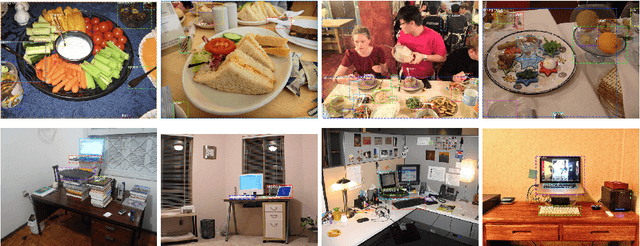
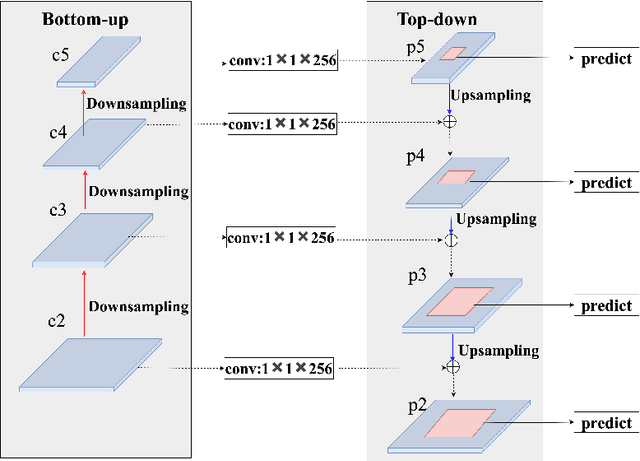
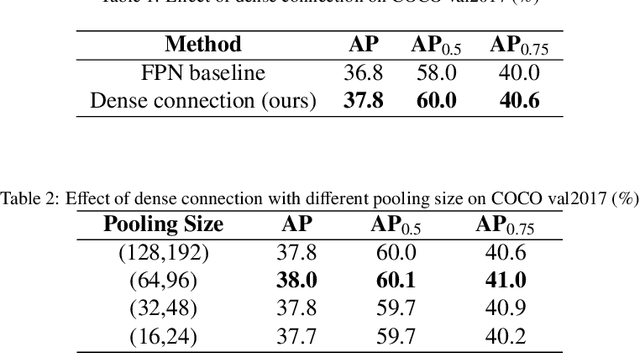
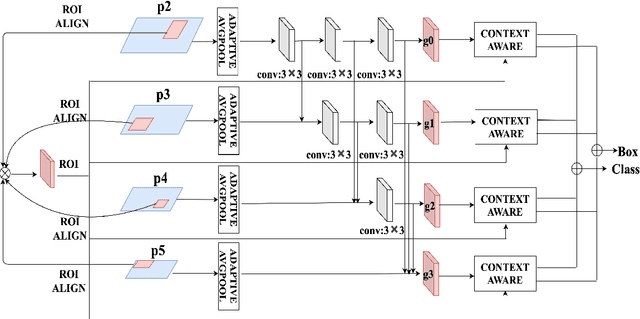
Abstract:RoIPool/RoIAlign is an indispensable process for the typical two-stage object detection algorithm, it is used to rescale the object proposal cropped from the feature pyramid to generate a fixed size feature map. However, these cropped feature maps of local receptive fields will heavily lose global context information. To tackle this problem, we propose a novel end-to-end trainable framework, called Global Context Aware (GCA) RCNN, aiming at assisting the neural network in strengthening the spatial correlation between the background and the foreground by fusing global context information. The core component of our GCA framework is a context aware mechanism, in which both global feature pyramid and attention strategies are used for feature extraction and feature refinement, respectively. Specifically, we leverage the dense connection to improve the information flow of the global context at different stages in the top-down process of FPN, and further use the attention mechanism to refine the global context at each level in the feature pyramid. In the end, we also present a lightweight version of our method, which only slightly increases model complexity and computational burden. Experimental results on COCO benchmark dataset demonstrate the significant advantages of our approach.
Mask Point R-CNN
Aug 02, 2020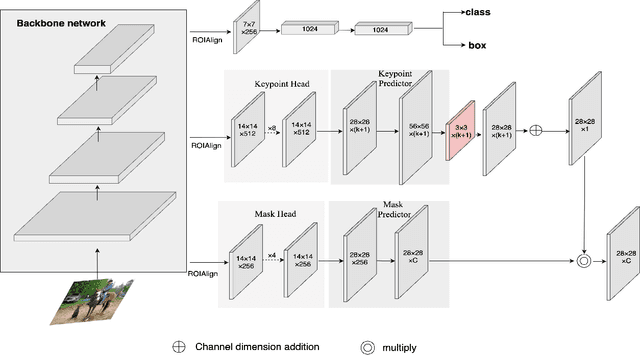
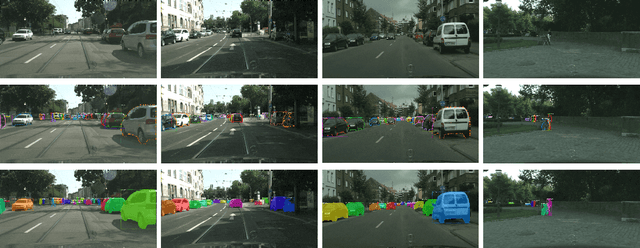
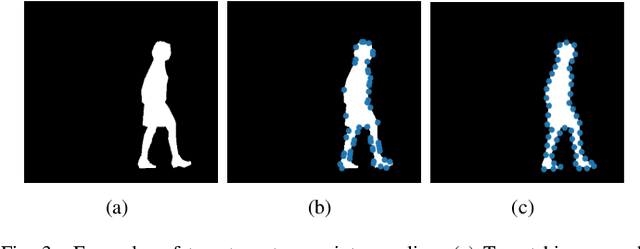
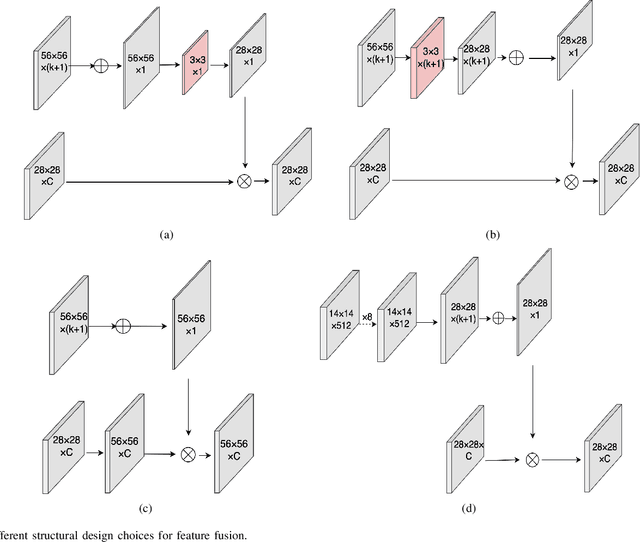
Abstract:The attributes of object contours has great significance for instance segmentation task. However, most of the current popular deep neural networks do not pay much attention to the target edge information. Inspired by the human annotation process when making instance segmentation datasets, in this paper, we propose Mask Point RCNN aiming at promoting the neural networks attention to the target edge information, which can heighten the information propagates between multiple tasks by using different attributes features. Specifically, we present an auxiliary task to Mask RCNN, including utilizing keypoint detection technology to construct the target edge contour, and enhancing the sensitivity of the network to the object edge through multi task learning and feature fusion. These improvements are easy to implement and have a small amount of additional computing overhead. By extensive evaluations on the Cityscapes dataset, the results show that our approach outperforms vanilla Mask RCNN by 5.4 on the validation subset and 5.0 on the test subset.
 Add to Chrome
Add to Chrome Add to Firefox
Add to Firefox Add to Edge
Add to Edge